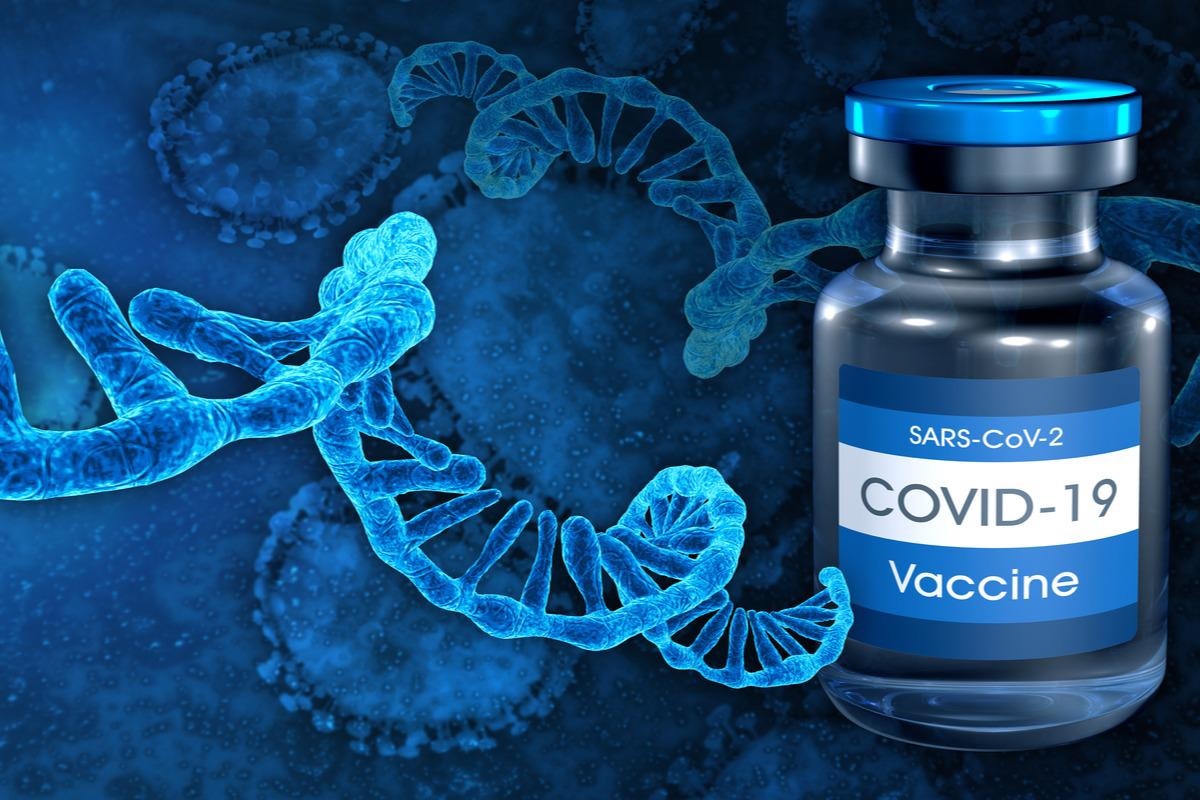In a recently published article in Frontiers in Immunology, scientists have discussed the possibilities of developing oral replicon-based mRNA vaccines against severe acute respiratory syndrome coronavirus 2 (SARS-CoV-2). In these vaccines, the Semliki Forest viral replicon is used for transgene amplification, and the Salmonella vehicle is used for oral gene delivery.

Study: Oral mRNA Vaccines Against Infectious Diseases- A Bacterial Perspective. Image Credit: CROCOTHERY/Shutterstock
Background
During the ongoing coronavirus disease 2019 (COVID-19) pandemic, two mRNA-based vaccines (Pfizer and Moderna) have been developed and rolled out in record time and speed. In both clinical trials and real-world situations, these vaccines have shown high efficacy in preventing SARS-CoV-2 infection and symptomatic COVID-19.
Recombinant mRNA vaccines are of two types, including non-replicating and self-amplifying mRNA vaccines. In non-replicating vaccines, the mRNA of interest is administered into the cytoplasm wherein it is directly translated to generate immunogenic proteins (antigens). In self-amplifying mRNA vaccines, the RNA replicons from alphaviruses, such as Sindbis virus, Semliki Forest virus, and Venezuelan equine encephalitis virus, are used for the expression/amplification of target mRNAs.
The most conventional routes of mRNA vaccine delivery include intramuscular, intradermal, intranodal, and subcutaneous injections. However, these vaccines require specific conditions for storage and transport to maintain stability. In addition, adjuvants used in these vaccines to improve immunogenicity often cause adverse side effects and increase the cost of production. To overcome these shortcomings, it is vital to explore different routes of administration, such as oral delivery.
Oral delivery of mRNA vaccine against SARS-CoV-2
The major obstacle to oral vaccine delivery is the degradation of mRNAs in the harsh environment of the gastrointestinal (GI) tract. Several strategies, such as yeast ghosts, microencapsulated antigens, and microbial adhesions, have been developed to overcome this obstacle. However, poor intestinal permeability of the formulations is a major problem in these strategies. Moreover, these strategies have not been explored to deliver mRNA vaccines.
Scientists from the Jeonbuk National University, South Korea, have explored a novel platform to develop oral mRNA vaccines. The platform utilizes replicons of alphaviruses (Semliki Forest virus) for the target gene amplification and Salmonella vehicles for oral delivery of the target gene.
To facilitate transcription in host cells and maintain the plasmid in Salmonella, the scientists have extensively modified the viral vector backbone. These modifications include the replacement of the bacteriophage promoter (SP6) with Cytomegalovirus promoter to enable gene transcription by mammalian RNA polymerases. The ampicillin selection marker has also been replaced with the aspartate-semialdehyde dehydrogenase auxotrophic marker to enable antibiotic-free maintenance and delivery of the plasmid.
The scientists have utilized Salmonella-mediated oral delivery approach for a viral replicon-based mRNA vaccine against SARS-CoV-2. Mechanistically, oral administration of the vaccine leads to the translocation of Salmonella from the luminal surface to the submucosa via specialized microfold (M) cells in the gut epithelium. This is followed by recognition and transmission of the bacteria by antigen-presenting cells to different organs (liver and spleen) via circulation.
The vector encoding the Semliki Forest virus replicon and SARS-CoV-2 proteins (vaccine antigens) is subsequently released into the host cell cytoplasm through bacterial lysis, followed by transcription and translation of vaccine genes to produce vaccine antigens. The antigens are subsequently presented to the T cell and B cell populations, leading to the induction of cellular and humoral (antibody-mediated) immune responses.
Advantages of Salmonella-mediated oral vaccine delivery
The main advantage of oral delivery of mRNA vaccines is the induction of robust mucosal immune response due to the direct interaction of Salmonella with immune cells in Peyer’s patches (a group of lymphoid follicles) located in the small intestine. Such a response is particularly effective in terminating respiratory and digestive infections. The gut bacteria can induce immune responses in the respiratory tract via activated immune cells. In addition, translocation of Salmonella to different organs via circulation can lead to the induction of robust systemic immune responses.
Another major advantage is the ability of Salmonella to invade and proliferate in antigen-presenting cells, as well as to deliver the target gene to these cells directly. This subsequently leads to effective expression of the target gene within the cells and induction of robust immune response.
No additional adjuvants are needed for Salmonella-mediated vaccine delivery. This significantly reduces the time and cost of vaccine production and prevents adverse side effects. The thermostability of Salmonella can be improved by lyophilization to facilitate vaccine dispatch.
The use of live-attenuated Salmonella for oral gene delivery comes with some disadvantages. The major concern is safety issues, which can be avoided by modifying the bacterial genome. Another disadvantage is pre-existing immunity against Salmonella, significantly reducing vaccine efficacy. This issue can also be avoided by genetic modifications.